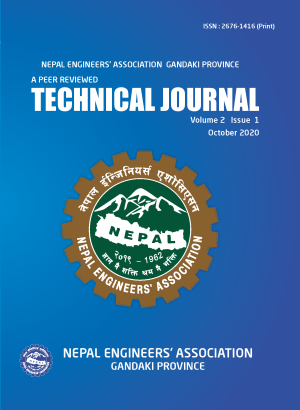Streamflow Variations across Nepal during 1986-2015
DOI:
https://doi.org/10.3126/tj.v2i1.32849Keywords:
Flow duration curve, hydrologic monitoring station, maximum daily discharge, percentiles, streamflowAbstract
This paper presents a picture of the streamflow variation in major hydrologic stations across Nepal during 1986-2015 in two periods; before and after 2000. Our study selected 27 high-quality hydrologic monitoring stations maintained by the Department of Hydrology and Meteorology (DHM), Government of Nepal distributed across the country, representing a wide range of basin size, from ~308 to ~54100 km2. We compare the flow duration curves (FDCs) for two periods, T1: 1986-1999 and T2: 2000-2015. The study quantifies the changes of different streamflow indices including minimum, maximum, average daily streamflow, different percentiles and top 10, 20 and 50 maximum daily streamflow. Many studies reported that the climate (such as temperature and precipitation) showed an abrupt variation during the late 90s in the central Himalayas. This study explores whether similar effects are observed in the streamflow of the Himalayan catchments. The results of the study show a mixed pattern of positive and negative changes for different streamflow indices. However, about 60% of analyzed station (i.e. 17 out of 27) showed the positive deviation of the maximum daily streamflow meaning more extremes were observed in the latter period compared to the former period. Seven stations revealed > +20% shift in the maximum daily streamflow from period T1 to T2. In particular, East Rapti at Rajaiya showed more than 80% increase with respect to T1 which deviated from an average of 304 (ranging from 123 to 682) m3/s to an average of 555 (ranging from 171 to 1260) m3/s. Overall, about 10% of increment could be found on time-sliced averaged maximum daily discharge between two periods. Most importantly, the inter- and intra- annual variation of extreme streamflow show a clear tendency of the elevated peak streamflow recurrently over time.
Downloads
Downloads
Published
How to Cite
Issue
Section
License
© Technical Journal
Authors are required to transfer their copyright to the journal.




